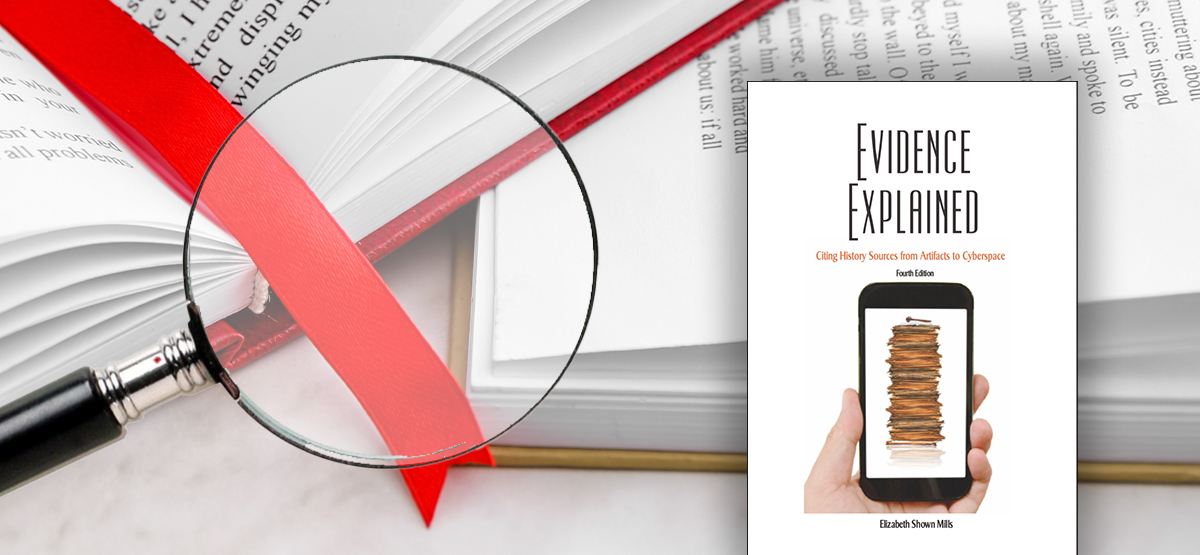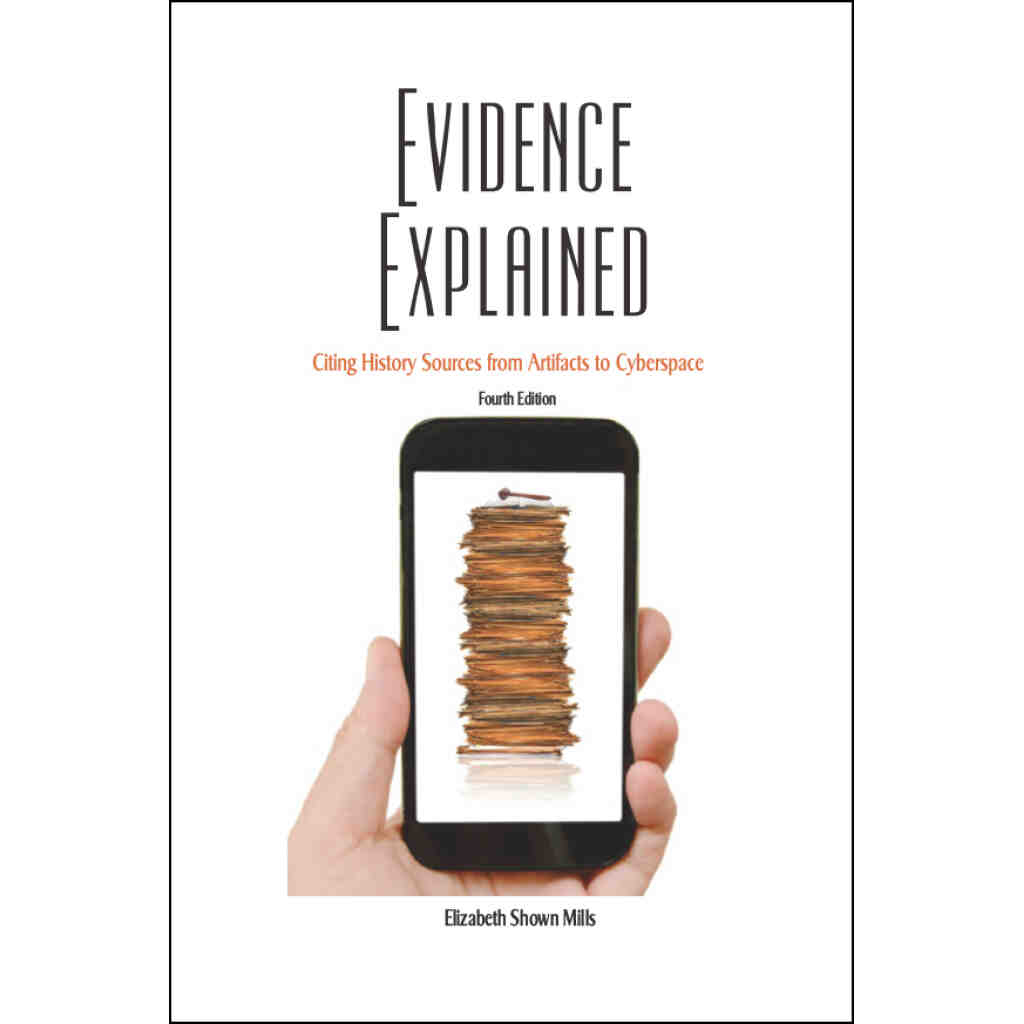
Citation Tips: Do All Citations Require Layers? By Elizabeth Shown Mills, CG, CGL, FASG
To celebrate the release of the new fourth edition of Evidence Explained: Citing History Sources from Artifacts to Cyberspace, EE’s author offers guidance drawn from the new edition. This is the third in our four-part series. ( View Part 1 | View Part 2 )
Previous posts in this series introduced the concept of layered citations and how they can help us. Researchers also ask a related question: Do all citations require layers? No. Here’s a short guide:
Single-layer Citations
In Evidence Style, citations to print-published materials and simple web publications can be handled in a single layer. For example:
- Books, journal and magazine articles, maps, newspaper items, and other standalone publications, when we consult the physical form, need only a single layer.
- Blogs and websites that create their own material, such as articles and simple databases, require only one layer.
However, each website item must be carefully analyzed to determine the nature of what we are using. Many websites offer two types of material: (1) material produced in-house, such as databases that serve as indexes to documents; and (2) images of documents housed elsewhere. As a result, some citations to a website may require only one layer, while citations to other databases offered by that same website may require multiple layers. As with all matters related to research, we must analyze each situation and use our judgment.
- Public artifacts that are standalone objects, such as grave markers in a cemetery, can be cited in one layer unless we use images or transcripts online.
This framework allows for multiple sources to be cited within the same reference note.We simply place a period at the end of our citation to each published work, thereby ending that “citation sentence.” Then we begin a new sentence for the next source. To ensure clarity, Evidence Style does not cite multiple sources within the same citation sentence. (Within the same reference note, yes. Within the same sentence, no.)
Multi-layer Citations
Careful students of history use original documents as the basis for thorough and reliable research. Doing so typically requires multiple layers. The content of those layers is dictated by the manner in which we access the materials: physically or online.
Physical access: Citations to manuscript material that we access in physical form require identification of three things:
- the document (who, what, when, and where created, followed by the specific page or entry number);
- the organizational scheme in which the document is archived (where maintained);
- the identity and location of that archives (where accessed).
Details for each of these three entities should be grouped in its own layer.Because each layer can have internal commas and other punctuation, the semicolon is again used between layers for a clear separation.
ONLINE ACCESS: Online access to imaged documents requires the use of at least two layers and sometimes three:
- Record Layer: where we identify the original document, as fully as it can be identified from the image itself
- Access Layer: where we identify the website that delivers the images and (often) the specific database through which the images were accessed
- Location Layer (aka “Citing …” Layer): where we report the source information as given by the website—a layer we begin with the words “citing …”
Organization is important in all aspects of research. It’s easy to understand the need for organizing our records so that we (and others) can easily relocate them. Likewise, the organization of our citation details determine whether we (and others) can easily locate a source and—more importantly—whether the essential details are clustered in a way that we understand the meaning of each detail.
Recent Blog Posts




